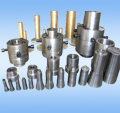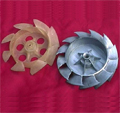

| Address: | PDS Enterprise Inc. 1650 West Artesia Blvd, Suite 278 Gardena, CA90248 |
| Phone: | 1-843-408-0142 |
| Email: | pdsenterprise@gmail.com sales@coolprototyping.com |


Home>Popular Page
68. The Real Facts Of Plastic Injection Molding
Plastic injection molding is often thought to be a hard process which is a wrong view. A variety of custom molds are manufactured using plastic molding process which varies from the smallest component to an entire body component.
The machinery involved in plastic injection molding is costlier and very sensitive and complex equipment. These machines are called as injection molding machines. The machines used are also heavy and some even weigh upto tons of kilogram. But only when these kinds of machines are used the final product turns out to be a quality product. This is so because the plastics are fed into these machines and they are heated until they become fluid.
Plastic materials used for the injection molding process are thermoplastics or thermosetting plastics. Both the thermoplastic and thermosetting plastics are polymers. Some widely used thermoplastics are nylon, polyethylene, and polystyrene while bakelite, vulcanized rubber are the widely used thermosetting plastic.
The plastic takes the shape of the cavity or the mold used and get solidified or settled in it. After being solidified it is ejected out After some time molded material is ejected out from the cavity. The same cavity can be used to make any number of molds. The mold is of any desired shape.
The injection molding machine has two components namely the injection unit, the mold and the clamping unit. One should not forget that the process involved in plastic molding is not as tough as the size of the machinery. It is a very simple and a systematic process. Initially the injection molding process starts with the injection of the plastic resins or polymers into the injection barrel. The resins are heated to melting point and now the fluid is poured into the mold which is of the desired shape needed. The mold has two components namely the injection mold and the ejector mold. The melted plastic resin in poured into the mold using a sprue the injection mold. And the ejector mold helps in ejecting the plastic part after it is solidified in the mold without any damage using ejecting pins.
The next step is the application of hudraulic or mechanical pressure. This is done in order to allow the trapped air in the mold to escape. This is called the dwelling process. After the pressure is applied the air cavities move to one corner of the mold. Then the fluid is allowed to solidify and the mold is cooled. Finally the solidified plastic part is ejected from the mold either manually or automatically.
After the cooling process there is often change in the mechanical that is both physical and chemical properties of the plastic part. The thickness of the mold is one of the important design considerations of the injection molding process. Usually a mold with an uniform wall thickness is preferred. Thus it reduces the change in mechanical properties of the plastic molds.
 We are constantly looking for new products in order to grow our business and Invention Home has enabled us to streamline that process much more quickly.
We are constantly looking for new products in order to grow our business and Invention Home has enabled us to streamline that process much more quickly. Marsha Dunmyre
CA, U.S.A
Cool Prototyping Copyright 2008-2009 © All Rights Reserved. Rapid Prototyping






